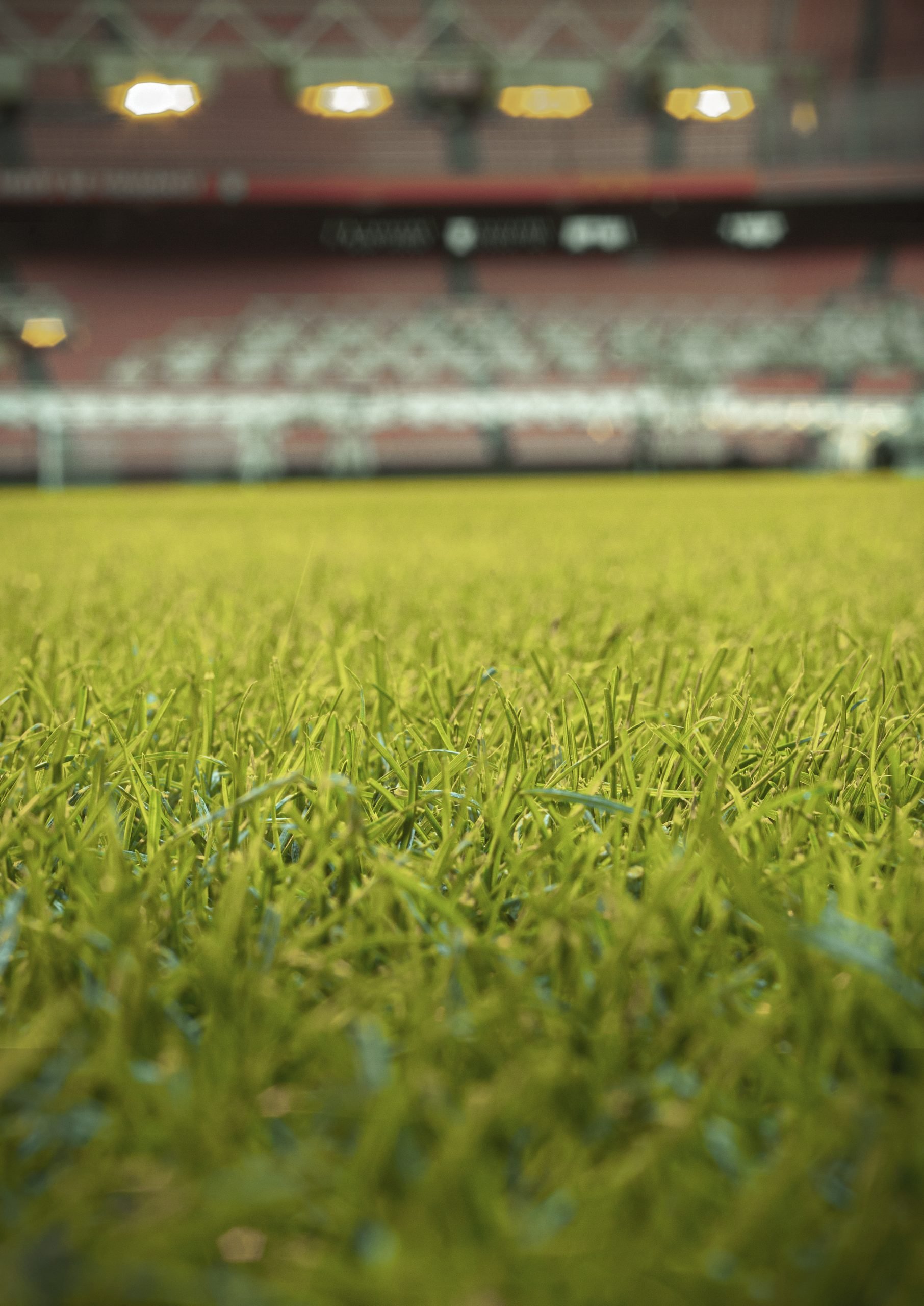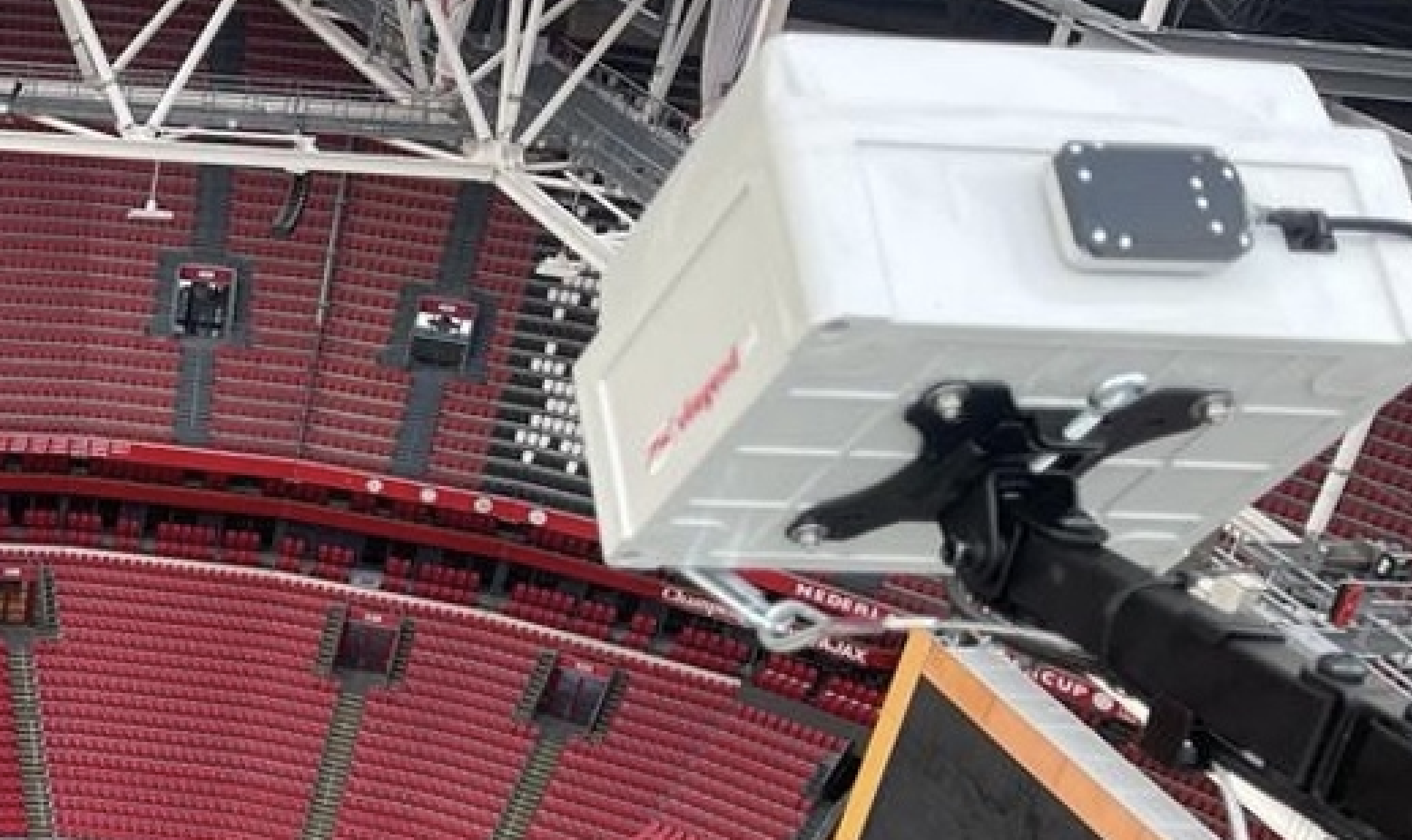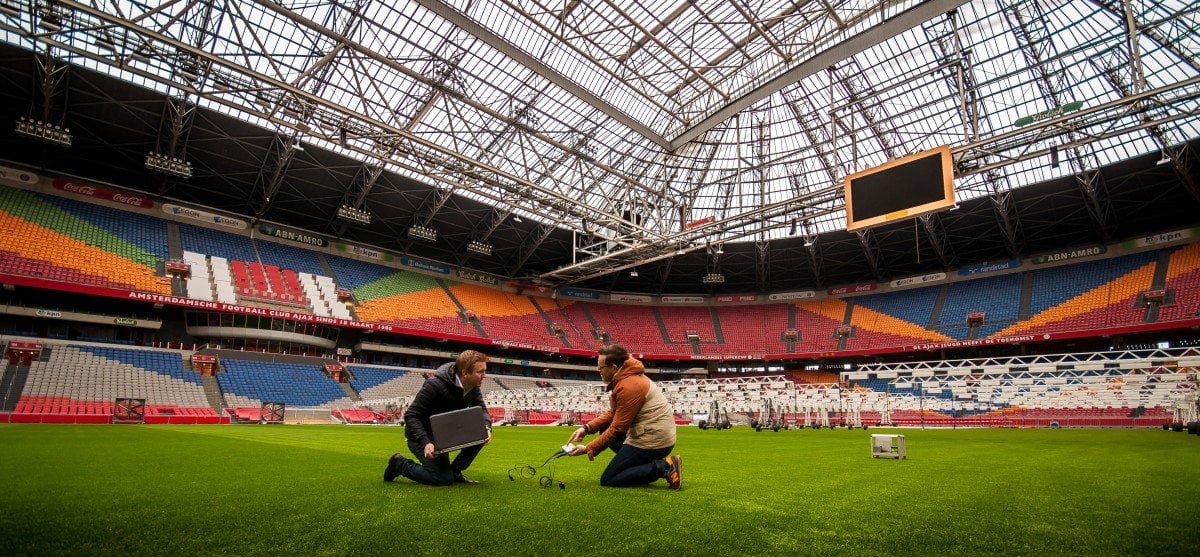
If there is one thing that is decisive for the big football stadiums of our world, it is the quality of the grass. No wonder that all possible technologies are used to ensure that professional football players can count on a perfect turf for their performance. The Johan Cruijff Arena, a forerunner in football stadiums, has been using HI Sport’s data team for several years now. With dozens of sensors under and above the grass, the status of the pitch is tracked 24 hours a day.
Literally, step by step, a new way of monitoring will be added to all those already in place: thanks to pressure sensors in the shoes of the grass team, an even better picture of the condition of the field will be obtained. Smart soles could reduce the costs of data collection enormously. “Measuring the specifics of your pitch is awfully time and labor-consuming,” Holland Innovative’s data biologist Joep van Cranenbroek says.
“And even if you do it in the best possible way, the results can be flawed, for example, because of different time intervals in-between measurements and the inconsistencies in the process. Also, data quality is very much dependent on the specific operators. The limited number of measurement points and the low-resolution results make things even worse. Our Smart Shoes can, on the other hand, work as an automated, passive measurement, with much higher coverage and a high-resolution result.”
And what’s more, the advantages don’t stop with the quality of the result, Van Cranenbroek adds. He has calculated that the Smart Shoes could save about 86% of the initial costs’ of the current way of measuring. “It’s not difficult to do the math: who wouldn’t want a better result for less money?”
The efficiency is in the quality as well as in the lack of double work. “The grass team of the Johan Cruijff Arena is already walking around all day, so to speak. Data can be collected ‘on the go’, simply via a measuring system right in their shoes. With every single step they take, they gather more data. The Smart Shoes feel as it were, how hard the grass is on a specific spot on the pitch – and how its grip is. With every step, the shoes collect new pieces of information.”
How it works
The Smart Shoes consist of eight pressure sensors in each shoe, divided from heel to toe. The sensors are connected to a pod that measures things like the angle of the foot (via a gyroscope) and plot the result on three axes for the best visualization. The left foot also constantly sends out a GPS-location, so every data point can be connected to a certain space on the pitch.

The first results in the Johan Cruijff ArenA are promising: the soles offer useful extra information, on top of the data that were already collected via the more than forty sensors in the stadium. The next steps will be to try and convince other football stadiums, and national and international football organizations like KNVB and UEFA.
But the ultimate goals are even beyond that. HI Sports wants to help Holland Innovative with its efforts in other industries as well. Most of all: precision agriculture. “There is a lot of talk about smart agriculture. Data is an all-important component in this. But how do you get good data? That’s something we are good at, for example by constantly working on better measurement systems. You first need to have the data before you can think about a possible implementation. The great thing is that our experience in football stadiums can, therefore, contribute directly to the improvement of precision agriculture. The closer the two worlds get to each other, the more promising it becomes.”
But first, Van Cranenbroek is fully occupied by finetuning the tests in the Johan Cruijff ArenA. “For now, much of what we do is based on assumptions. The more we test, the more we know about things like accuracy, repeatability, and reproducibility.
Want to know more about Smart Shoes, or ready to join us for a demonstration? Contact Hans Meeske, Holland Innovative / HI Sports, at [email protected].








